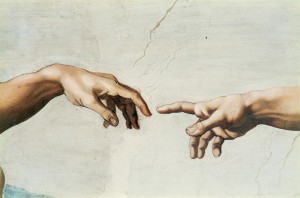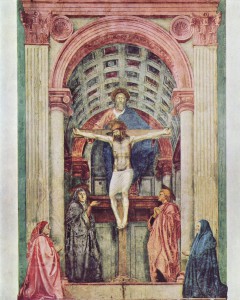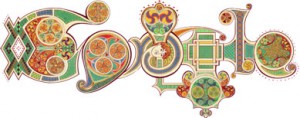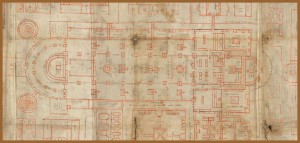Michelangelo painted the Sistine Ceiling in four years, 1508-1512. Read below an excerpt of Michelangelo’s biography by Giorgio Vasari (1511-1574), the first art historian. Visit the Sistine Chapel with the modern art historians of SmartHistory.org in Second Life, a virtual environment. Vassar College recreated the Sistine Ceiling on their Second Life “campus”. You don’t need to open an account to visit, instead watch SmartHistory’s video of Michelangelo’s work on the Sistine Ceiling. I’ve added a video clip of sidewalk art based on Michelangelo’s Creation of Adam from the Sistine Ceiling. What do you think of these virtual recreations of Michelangelo’s frescoes in the Sistine Chapel? Why do you think these paintings are still significant for contemporary society?
historian. Visit the Sistine Chapel with the modern art historians of SmartHistory.org in Second Life, a virtual environment. Vassar College recreated the Sistine Ceiling on their Second Life “campus”. You don’t need to open an account to visit, instead watch SmartHistory’s video of Michelangelo’s work on the Sistine Ceiling. I’ve added a video clip of sidewalk art based on Michelangelo’s Creation of Adam from the Sistine Ceiling. What do you think of these virtual recreations of Michelangelo’s frescoes in the Sistine Chapel? Why do you think these paintings are still significant for contemporary society?
Excerpt from Vasari’s biography of Michelangelo in Lives of the Artists
When the Pope was returned to Rome, Bramante (a friend of Raffaello’s, and therefore little a friend to Michael Angelo) tried to turn his mind from finishing his sepulchre, saying it was an evil augury and seemed like hastening his death to make his own grave; and he persuaded him that on Michael Angelo’s return he should set him to paint the ceiling of the chapel in the palace, in memory of Sixtus his uncle. For Bramante and Michael Angelo’s other rivals thought to draw him away from sculpture, in which they saw he was perfect, and make him produce less worthy works, not to be compared with Raffaello’s, knowing he had had no experience in painting in fresco. So when he was returned and proposed to the Pope to finish his tomb, he desired him instead to paint the ceiling of the chapel. Michael Angelo sought in every way to shift the load off his back, proposing Raffaello instead. But the more he excused himself, the more impetuous the Pope became. So seeing that his Holiness persevered, he resolved to do it, and the Pope ordered Bramante to make the scaffold. He made it hanging by ropes passed through holes in the ceiling, which when Michael Angelo saw, he asked Bramante how the holes were to be stopped up when the painting was finished. He answered, “We must think of that afterwards, but there is no other way.” So Michael Angelo knew that either Bramante was worth little or that he was no friend to him, and he went to the Pope and told him the scaffolding would not do. So he told him to do it his own way. He therefore ordered it to be made on supports, not touching the wall, and he gave to a poor carpenter who made it so many of the useless ropes that by the sale of them he obtained a dowry for one of his daughters.
Visit the Sistine Chapel in Second Life
Sidewalk version of Michelangelo’s Creation of Adam
Groups 4, 5, and 6: Please comment on a classmate’s post by Saturday, 4/21
Groups 1, 2, and 3: Please submit a post by Saturday, 4/21







